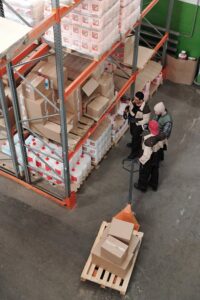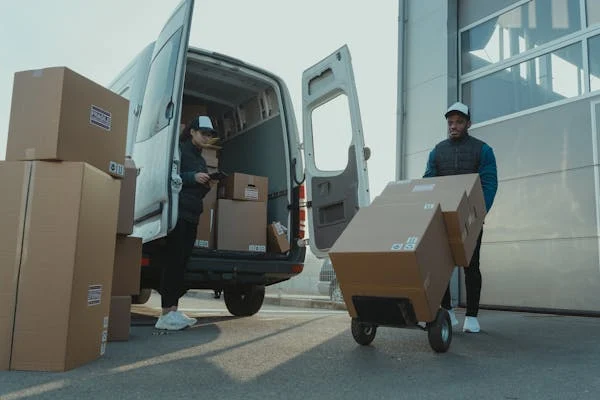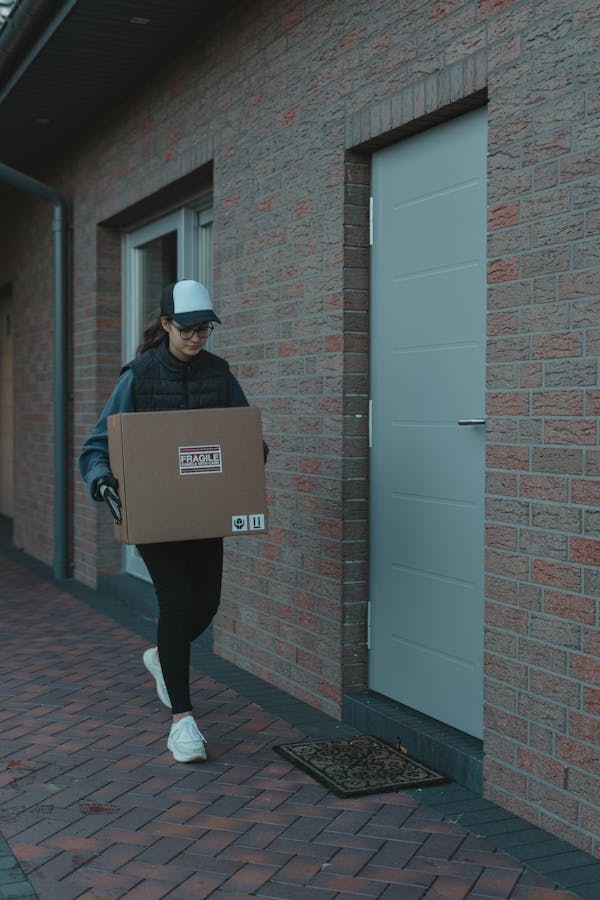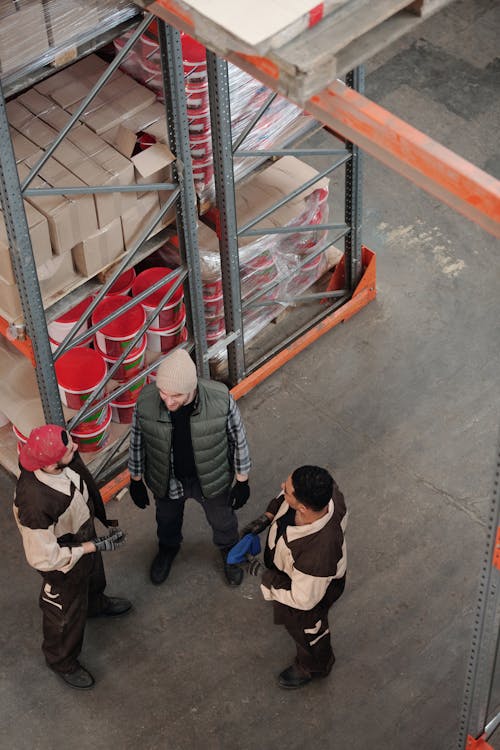1-Trucking Automation Companies Supporting the Transition to Sustainable Packaging: Strategies, Cost, and Operational Implications
Driving Sustainable Packaging
The Role of Logistics and Trucking Automation companies in Promoting Sustainable Packaging
According to the MC Logistics team of experienced logistics and trucking investment professionals, Focusing on the increased level of awareness of environmental problems nowadays, the subject of sustainable packaging has become a significant factor in the sphere of supply chains. Logistics and trucking automation companies have a critical role in facilitating change in logistics towards sustainable packaging. This article will look into how these individual firms can help in this transition and the cost implications as well as the operations involved.
Understanding Sustainable Packaging
Green packaging may be defined as packaging that has been designed with the objective of reducing its adverse influence on the surrounding environment at different stages of its utilization. This is in the use of recyclable or biodegradable or compostable material and the minimization of packaging and other wastes. The general trend of using more sustainable packaging can also be considered as fitting into other global objectives like the lowering of carbonisation’s levels, the preservation of resources and the increase in recycling. Trucking automation companies are increasingly adopting green packaging as part of their commitment to sustainability and efficiency.

Approaches to Facilitating Permanent Packaging
- Adopting Eco-Friendly Materials
Sourcing Sustainable Materials: Use only the products supplied by the companies who please the renewable or recycled products like recycled paper, biodegradable plastics, composting materials etc. Make sure that these materials fit the sustainability and functionality of an industry standard for such products.
Material Reduction: This should be achieved through promotion of packaging materials which are eco-friendly, creative and simple packaging techniques which will help to cut down on the amount of materials used during packaging, but at the same time ensure that the products to be packed are well taken care of. This can range from being creative when it comes to the usage of material in the creation of new structures without underestimating the strength of the structure.
- Optimizing Packaging Design
Design for Efficiency: Collaborate with manufacturers to ensure packaging that effectively utilizes the shipping space hence minimizing the volume and weight of the shipment. This can reduce the expenses on transport and limit the amount of CO2 released into the air.
Modular Packaging: Design simple and changeable packaging layers that have to be applicable to all definite multiplication and different forms and dimensions of the product. These favorable outcomes are widely helpful in the reduction of wastage, the enhancement of productivity.
- Recycling and Waste Management are related concepts to pollution control, which should be developed into programs at an organization.
Recycling Initiatives: Put in place measures of recycling packaging materials commonly used in your operations. Some of the measures include provision of recycling bins at the warehouses and distribution centers; engaging recycling companies.
Waste Reduction: Manage packaging waste by controlling and decreasing waste through implementing new ways. Such measures can consist of recycling the packing material or on donating the remaining packing material to other companies or facilities that may find use for the packing materials.
- Today, I will be introducing Partners and Suppliers.
Supplier Engagement: Promote sustainable packaging products and/or processes by partnering with suppliers of packaging products. This entails also talking about and incorporating the sustainability objectives in the procurement strategies.
Industry Partnerships: Industry associations participate to get the updated idea about the leading practice, technology and regulation of sustainable packaging.
- Educating and Training Staff
Training Programs: Establish awareness and education to the employees concerning use of sustainable packaging and how the process can be achieved. This is useful in developing the culture of sustainability in the organization.
Awareness Campaigns:
Promotion: In this step, the company needs to develop an awareness campaign that can be aimed at customers and business partners regarding the necessity of using sustainable packaging and possible ways for contributing in this process.
Cost Implications
The transition to sustainable packaging involves several cost considerations: The transition to sustainable packaging involves several cost considerations:
- Material Costs
Higher Initial Costs: However, green materials are generally costly in the initial instance compared to other conventional packaging materials. This is because of usage of specific materials as well as exact strategies of creating products.
Bulk Purchasing: In the case of increased costs one can buy in bulk or negotiate for long term contracts with the suppliers to be given a lower per unit price.
- Design and Development Costs
Design Changes: Incorporating new packaging designs which are probably friendly to the environment may also require a company to spend more money in research, developments, and testing. However, they increase the procurement costs, which can be offset by concentrating on the efficient operational costs.
Customization: High customization may entail more costs to begin with because it is very specific in design; however, it can prove to be more efficient and less costly in the long run.
- Operational Costs
Implementation Costs: New sustainable packaging practices may increase organisation operational costs since it may require changes in packaging lines, staff, and waste management systems amongst others.
Logistics Efficiency: As discussed earlier, a sustainable packaging process can also have some positive impacts on the operation of a business, for instance, it implies lighter and more compact packaging which can in the long-run save on the transport costs hence counterbalancing the initial outlay, in part.
Operational Implications
- Supply Chain Adjustments
Supplier Coordination: There can be changes to the supply chain to accommodate the new packaging materials and processes being employed in sustainability. This entails planning and organization of supply from various suppliers, also there is keen observation in the delivery of materials to enhance environmental conservation.
Inventory Management: In Salvador’s case, there is a realization that changing packaging affects inventory management in some ways. In order to control stock raw materials because of the appearance of new packing sizes and weights, is a vital factor in the company.
- Waste Management
Waste Reduction: Managing change is also an essential aspect when it comes to the management of waste during the change to sustainable packaging. This entails implementing programs that deal with the packaging waste and its proper disposal and recycling.
Compliance: Respect the legislation from the country where the business operates and the international legal acts concerning recycling of packaging waste. Such additional activities may include documentation and coordinating with some of the authorities.
- Customer Expectations
Brand Image: Sustainable packaging as a concept can unlock new benefits for a company’s brand image and appeal to consumers that are progressively becoming sensitive to the environment. These efforts must be relayed to the customers through marketing and labeling of the products.
Customer Feedback: Be ready to constantly gather comments from the customers concerning sustainable packaging and make necessary changes as required.
Successful examples of Transition
Unilever: In another way, Unilever has promised to significantly cut on the use of plastics through packaging that is either recyclable, reusable, or biodegradable. Initiatives taken by the company consist of the utilization of recycled material by the company and the designing of new packaging materials that minimize the use of plastic.
Coca-Cola: Coca-Cola has a product called PlantBottle packaging that features aspects of plant derived material instead of fossil fuel sources. It will remain committed to capital expenditure on sustainable packaging solutions as well as sustainable packaging materials.
IKEA: Another area that IKEA has paid much attention to is its packaging, of which it has used renewable as well as recyclable material. Finally, the company’s commitment refers to the decrease in packaging waste and the enhancement of the sustainability of the offered items.
Future Trends
Conclusion
The changing of the packaging to a sustainable one needs the following strategies: sourcing of raw material for packaging from the environment, techniques in packaging design, recycling initiatives, and partnerships. Though it comes with some costs attached to the changes as well as the basic alterations of the operations of the company, there are long-term gains in terms of better customer perception, minimization of the impact of the natural environment on the organization, and may lead to increased efficiency hence cutting some costs. Sustainable packaging is a strong goal that has to be implemented by logistics companies in order to respond to the challenges of environmentally friendly consumers.





